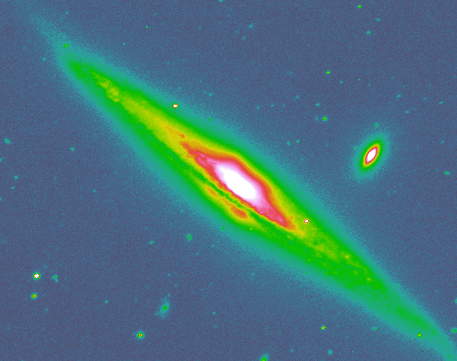Galaxy bulges

We believe galaxies formed and grew from gas that rained down onto concentrations of
dark matter due to the force of gravity, not unlike rain water collecting onto lakes and oceans.
Many of the stars show an initial preference for forming flat, rotating disks.
But, especially in larger galaxies, the central regions
I study several of the hypothesis on the formation of central bulges:
- Did bulges form first, and their surrounding disk formed afterwards? Alternatively, did the disk form first, and later formed the bulge through an internal transformation? To address this question I look at colors and spectral diagnostics of the ages of stars in bulges and disks, both for nearby bulges and for bulges of galaxies at cosmological distances from us, looking back up to 8 billion years, or over half the age of the Universe.
- How similar are central bulges to elliptical galaxies? One historically common view is that bulges are just small, perhaps very old elliptical galaxies, that happened to grow a disk around them. To address this question, I study the radial concentration of stars, and the flatness of the light distribution in nearby galaxies.
I have paid special attention to the innermost few hundred parsec of bulges. With Graham and Peletier, I found that the central, densest parts of over 60% of bulges have flat shapes more like a disk than a spheroid (Balcells, Graham & Peletier 2007a). It would make sense to say that these systems are part of the disk rather than the spheroid. One open question is whether these inner dense disks are a late arrival to the galaxy cores, or rather very old structures, perhaps the seeds from which the galaxy formed.
With Lilian Domínguez, I studied the shapes and colors of galaxies at redshifts up to 1, which harbor disks and bulges, using images from the Groth and the GOODS-N surveys. We found that some of the massive bulges are already formed at redshifts z~0.8. Yet we caught a few of the studied galaxies forming stars at tremendous rates in their centers (Domínguez-Palmero & Balcells 2009). We suspect we caught these galaxies in the midst of forming their bulges out of material from their disks.
Last Modified: 06 January 2025